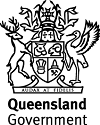Published Wednesday, 21 January, 2009 at 10:07 AM

Minister for Primary Industries and Fisheries
The Honourable Tim Mulherin
Queensland Summer: humidity, storms and termites!
Primary Industries Minister Tim Mulherin is warning Queenslanders to be on the lookout for termites – which are on the move and looking for new homes.
Mr Mulherin said: “At this time of year, with increased humidity, millions of termites grow wings and fly off from their nests in swarms to try and find a mate and establish a new colony.
“In Queensland most of this activity occurs in November-December but the termite swarming season continues on until March.”
“They usually swarm at dusk and may be attracted to lights at night.
“Following swarming, termites shed their wings and each mated pair looks for moist, partially-decayed timber to establish a new colony.
“The termites die within 24 hours if they cannot find the right spot.
“Recent summer storms have resulted in damp conditions – which is one of the prerequisites for termites establishing a foothold.
“Regular inspections of buildings by owners, preferably at three to four month intervals, for signs of termite activity will reduce the danger of serious infestation occurring.
“It is generally advised that if you find termites in your home, don’t disturb them, call a licensed Pest Management Officer.
“Premature attempts to repair or replace infested timber may cause the termites to withdraw temporarily from the area and hinder effective treatment.
“Raising awareness of the risk termites pose to houses could save a lot of heartache later on,” Mr Mulherin said.
Department of Primary Industries and Fisheries (DPI&F) timber entomologist Dr Brenton Peters has advice for householders including:
• Termite damage in timber may be detected by the presence of mud 'plastering' or ‘galleries’ along joints and cracks in the surface.
• The parts of the building in contact with or close to the soil should be inspected first.
• Places to look for termite mud galleries or damage include building foundations, piers or stumps and sub-floor area, skirting boards, architraves, cornices, mouldings and roof timbers, particularly those made of softwood.
• Locations where dampness or humid conditions prevail, such as bathrooms, laundries or places where there are leaky pipes or drains are likely places of infestation.
• Where termites are working between timber walls or in timber that has been painted, there may be noticeable bulging, staining or rippling of the surface.
• Infestation in the wall cavity of a brick veneer house may result in an area of stained plaster veneer.
• Damaged wood, when lightly tapped, often has a 'papery' sound.
• Timbers with a large cross section, such as house stumps, may have to be drilled or probed to determine their condition.
Dr Peters said anyone with any doubt should seek advice from a professional.
“A competent inspector should have access to a range of devices to assist in the detection of termite activity including a screwdriver, small knife, moisture meter, borescope and microwave technology instruments (which can detect movement within timber),” Dr Peters said.
For more information visit www.dpi.qld.gov.au or call 13 25 23
Media: 32396530

